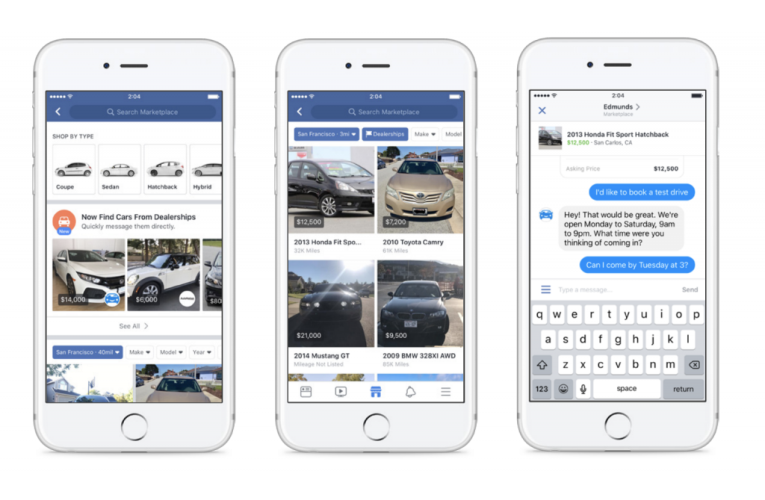Facebook Marketplace
Facebook Marketplace was introduced in 2016 as a place for people to buy and sell within their communities. Think Craigslist, but with Messenger. But plans to incorporate more brands into the platform mean that big changes are
Facebook Marketplace was introduced in 2016 as a place for people to buy and sell within their communities. Think Craigslist, but with Messenger.
But plans to incorporate more brands into the platform mean that big changes are underway. In June 2018, Facebook announced the option for businesses to place ads in Marketplace. And soon Facebook will add more B2C options to the C2C platform.
In other words, think Amazon with a hyper-targeting algorithm.
So, how does Facebook Marketplace work exactly? And what can businesses do to prepare? Read on to learn which features are currently available and how to plan for what’s in store.

What is Facebook Marketplace?
Facebook Marketplace is an online shopping channel. It’s a place for Facebook users to buy and sell from each other locally.
As of May 2018, Marketplace is used in more than 70 different countries by more than 800 million people each month.
You can access Facebook Marketplace in the Facebook app and on desktop:
- On mobile, click the white storefront symbol at the bottom of the app on iOS and at the top of the app on Android.
- On a desktop web browser, click the red and white storefront symbol in the left margin.
Listings in Facebook Marketplace are organized by categories like Entertainment, Vehicles, Housing, and Hobbies. Shoppers can filter searches by price and location, and save listings for future reference.
Each listing can contain up to 10 photos along with a description of the product. Interested customers can message sellers directly on Messenger to ask questions.

Facebook Marketplace ads
Ads in Facebook Marketplace appear in-feed when someone browses.
These placements have the advantage of reaching people where they are shopping. Advertisers have seen a marked increase in conversion rates compared with News Feed placements.
Facebook Marketplace Shop listings
For now, only companies in the US can apply to list and sell products in Facebook Marketplace. Auto dealerships in certain locations are also allowed to list vehicles through inventory partners.
Brand listings currently appear in two areas on Marketplace: in the Shop category and in the Daily Deals category. (As of January 2019, this content is only visible to US users.) Only hand-selected businesses that offer brand-name products at discounted rates are eligible for the deals program.
Facebook doesn’t charge list fees or take a cut of commissions. So for brands approved to list products, Marketplace is essentially a free, organic distribution channel. But Marketplace listings require a Facebook Checkout integration, which charges a $.30 and 2.9 percent fee for every transaction.

When you plan your next online retail and social media marketing strategy, make sure that your Marketplace efforts align with your overall goals.
